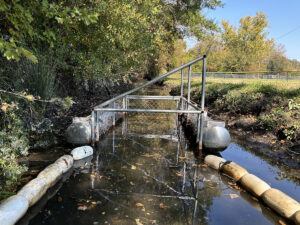News
Executive director presents ‘The State of the Tar’
Education, Environmental, Outreach, Tar-Pamlico Watershed, Water Quality
Posted on October 10th, 2023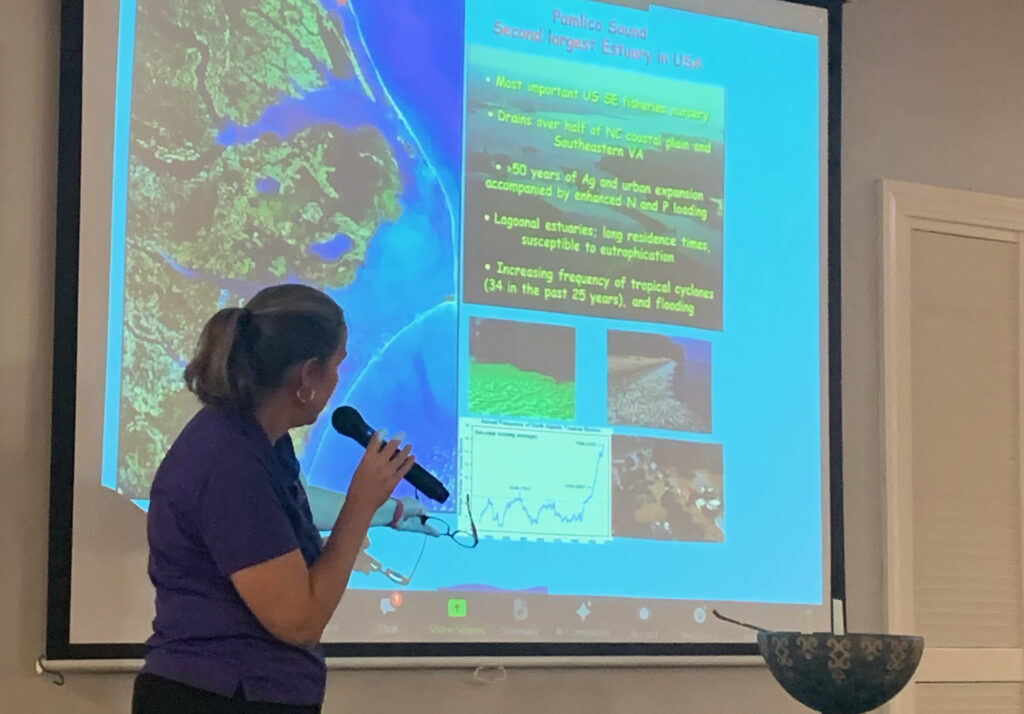
Sound Rivers Executive Director Heather Deck talks about the Tar-Pamlico estuary during the Cypress Group meeting.
Sound Rivers Executive Director Heather Deck was in the spotlight this week, giving a history of the Tar River through the lens of water quality.
Monday night, Heather joined new Pamlico-Tar Riverkeeper Katey Zimmerman and members of the Cypress Group of the Sierra Club in Greenville for the group’s monthly meeting.
“I talked in general about the state of the Tar, which is a hard one to do. Part of that was looking back to the 1980s and ‘90s to today — how the whole rules for nutrient pollution came about and how we’re not meeting them,” Heather said.
The Tar-Pamlico Nutrient Strategy that went into effect in 2000-2001 sought to reduce nitrogen levels in the estuary by 30%, cap phosphorus levels at a 1991 baseline and remove the Pamlico estuary from North Carolina’s impaired waters list. However, data shows that the impact has not been what was hoped.

“The data shows nitrogen levels from the early 1990s through 2014 (the latest available), and it just showed how our efforts to reduce nitrogen are going backwards since about the early 2000s. It seems to be more driven by runoff — farm, urban runoff — as opposed to wastewater sources like wastewater treatment plants,” Heather said. “While they’re not working currently, and it’s time to reassess all of this, that doesn’t mean the rules didn’t work at all. It would be much, much worse today if those rules were not in place. I think it would be a phenomenal piece of research of ‘what would the river look like if we didn’t have these rules in place over the last 30 years?’ That would probably paint a really interesting picture.”
She also addressed the biggest threat to eastern North Carolina waterways today: the loss of wetland protections.
The presentation wasn’t all bad news, however. Heather made a point of highlighting the successes over the past few decades, as well: increased state and federal funding, including $2 billion in state funding allocated for water and sewer projects in North Carolina’s 2023 budget; $100 million for land conservation projects; and increased focus on the need for resiliency planning and green stormwater infrastructure. She also ran through a list of “Management That Works” to increase the health of our waterways — tree-lined buffers, protecting headwaters, drinking water sources and wetlands, and implementing green stormwater infrastructure.
“I ended with the positive and a path forward, encouraging people to work local and stay engaged,” Heather said.
Related News
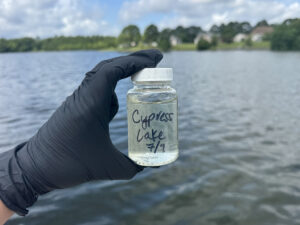
Specialist investigates lake connection to mysterious skin rash
July 10th 2025

Riverkeeper: Central NC flooding part of a much larger issue
July 10th 2025

N.C. Governor vetoes bad rulemaking bill
July 10th 2025

Riverkeeper, program director ‘Growing More than Rain Gardens’
July 10th 2025

Volunteer coordinator goes ‘fishing’
July 10th 2025
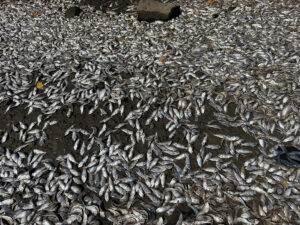
Neuse fish kill expected to extend beyond holiday weekend
July 3rd 2025
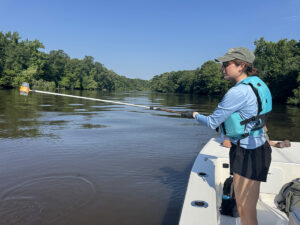
Swim Guide fails prompt Maple Cypress investigation
July 3rd 2025

Riverkeeper, town partners root out source of Smithfield sediment pollution
July 3rd 2025
